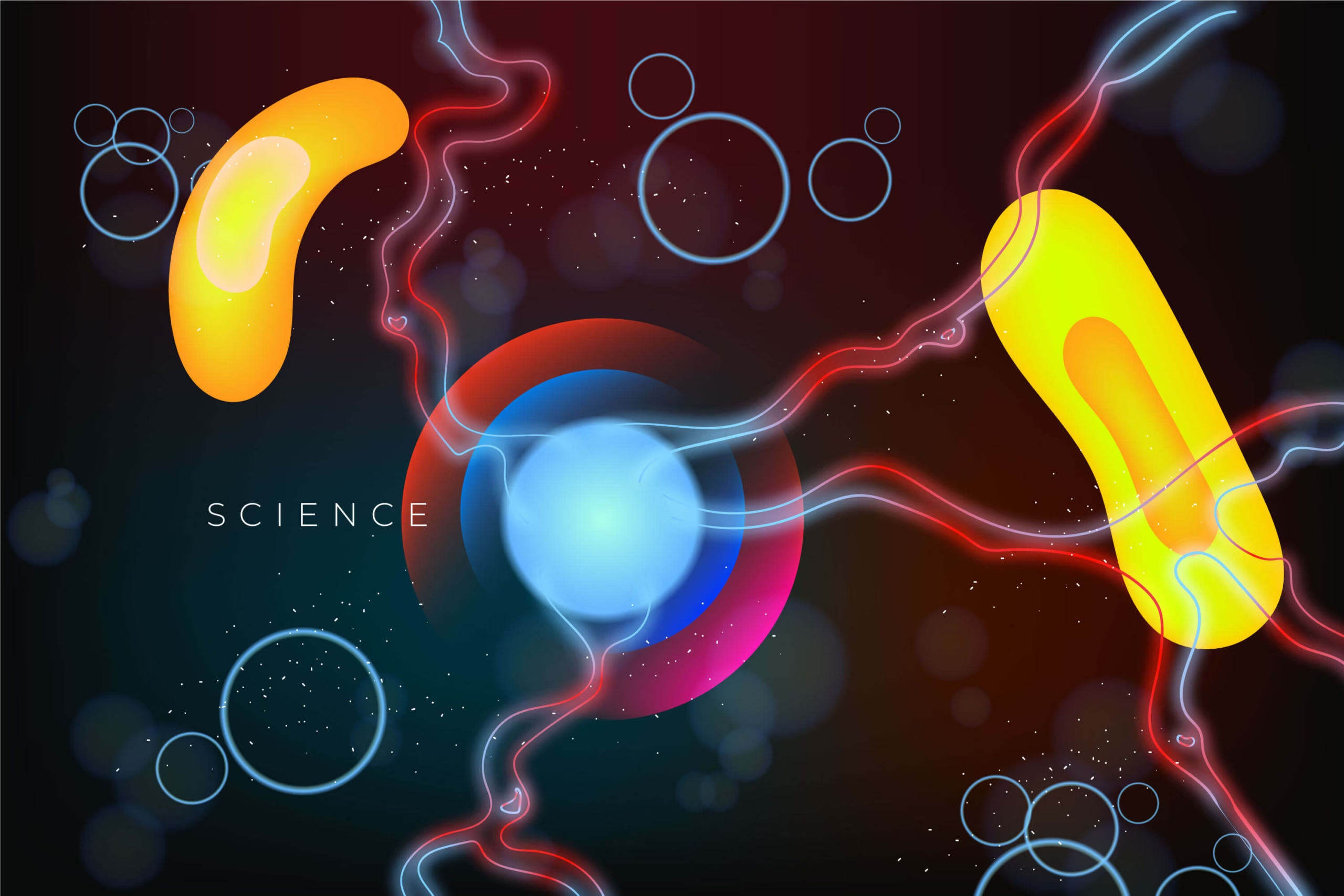Sunlight is essential for life, but it brings with it ultraviolet (UV) radiations that significantly impact our skin. Understanding how these rays affect our skin, can help us make informed decisions about sun exposure and protection. In this blog, we will explain the effects of ultraviolet radiations on skin health, describing their benefits and potential risks, and highlight how to protect yourself effectively. Ultraviolet Radiations Ultraviolet (UV) radiations are invisible rays that come from the sun and some man-made sources, like tanning beds. These are some kind of energy waves that can touch your skin. Ultraviolet radiations are classified into three main types based on their wavelengths. Types of UV Radiations 1. UVA (320-400 nm) Ultraviolet Rays penetrate deep into the skin, reaching the dermis layer. They are responsible for premature aging, leading to wrinkles and age spots. However, UVA exposure also stimulates melanin production, giving us the sunny glow. But be careful, too much UVA can damage the skin and increase the risk of skin cancer. 2. UVB (280-320 nm) Ultraviolet B rays, on the other hand, mainly affect the epidermis: the outermost layer of the skin. These rays are the main culprit behind sunburn. Still, they’re not all bad. UVB radiation triggers vitamin D synthesis in our skin, which is essential for bone health and immune role. Finding the right balance of UVB exposure is key to reaping its benefits without the risk of skin damage. 3. UVC (100-280 nm) Ultraviolet C rays are the most harmful, but thankfully the Earth’s ozone layer blocks most of them. They rarely reach our skin under normal conditions. Benefits of Ultraviolet Radiations Despite their potential dangers, ultraviolet radiations offer some surprising benefits. For instance, one of the most significant advantages is their role in vitamin D production. UVB rays stimulate the production of vitamin D in the skin, which is crucial for bone health, immune function, and overall wellbeing. Without adequate sunlight, many people may struggle to get enough vitamin D, which can lead to deficiencies. Furthermore, exposure to UV rays can positively affect mood. Sunlight encourages the production of serotonin, a hormone linked to mood regulation. Therefore, increased serotonin levels can enhance overall mood and help in combating feelings of depression or anxiety. Dark Side of Ultraviolet Radiations Despite these benefits, overexposure to UV radiations can have serious consequences. Sunburn, premature aging, and an increased risk of skin cancer are some potential risks. Here’s a closer look: Sunburn Sunburn is a common and immediate effect of UVB rays, causing painful redness, swelling and peeling of the skin. Having frequent sunburns can cause long term damage and increase the risk of developing various types of skin cancer. Premature Aging UVA rays penetrate deep into the skin and damage collagen and elastin fibers, which accelerate the formation of wrinkles, fine lines and loose skin. This damage results in an aged appearance that may occur much earlier than natural aging. Skin Cancer Extended UV exposure significantly raises the risk of skin cancer, which includes: Eye damage UV radiation can damage the eyes, contributing to conditions like cataracts and macular degeneration. For example, skiers who do not wear protective goggles at high altitudes risk painful UV burns to the cornea. Long term exposure can also increase the risk of macular degeneration, which is a leading cause of vision loss in older adults. Protecting Your Skin from UV Radiations To reduce risks and safely enjoy the benefits of sunlight, it is important to adopt effective sun protection strategies. Here are some practical tips: Apply Sunscreen Regularly Use a broad-spectrum sunscreen with an SPF of 30 or higher. Apply it liberally to all exposed skin, even on cloudy days, and reapply every two hours or more often when swimming or sweating. Wear Protective Clothing Choose clothing that provides UV protection, like long sleeve shirts, pants, and wide brimmed hats. These garments are specifically designed to protect you from harmful rays, while ensuring that you stay cool. Seek Shade Reduce your sun exposure, especially between 10 a.m. and 4 p.m., when UV rays are strongest. Use umbrellas or look for shade when going out for extended periods. Use Sunglasses Protect your eyes from UV rays with sunglasses that block 100% of UVA and UVB rays. This will help prevent eye damage and reduce the risk of cataracts. Understanding the UV Index and Safe Sun Exposure The UV index is a useful tool that measures the strength of UV radiation on a given day. This helps you assess the potential risk of harm and take appropriate precautions. Here is a guide to interpret the UV index: Ultraviolet radiations can be both beneficial and harmful. They help with vitamin D production but can also lead to serious skin issues if overexposed. By understanding the dual nature of UV rays and taking appropriate precautions, you can enjoy the benefits of the sun while minimizing its risks. Balance is key to keeping your skin healthy and glowing. Myths and Misconceptions about Ultraviolet Radiations You must have often heard that tan recovers skin health very quickly. But this is a misconception. Tanning means developing resistance against ultraviolet radiations, and it is not a sign of good health. Another myth you must have heard, that sunscreen blocks the production of vitamin D. But the truth is, even if you use sunscreen and spend a little time in the sun, you can still get an adequate amount of vitamin D. If you want a healthy life, it’s important to dispel these myths. So, let’s wrap this up with some practical advice. Conclusion In conclusion, I would like to say that ultraviolet radiations has many benefits, like in the production of vitamin D and helping in different treatments. However, excessive can be harmful and could cause different problems. The best approach is to stay connected with smart technologies and adopt preventive measures. Get started today by choosing a tip from this post and trying it out!
Golgi Apparatus and Protein Synthesis | How Cells Modify Proteins
The Golgi Apparatus plays a key role in cells. It is essential for protein synthesis and modification. Italian scientist Camillo Golgi discovered it in 1898. This organelle processes proteins that the endoplasmic reticulum (ER) synthesizes. Then, it prepares these proteins for their specific functions. Without the Golgi Apparatus, proteins miss critical modifications. Consequently, they cannot function properly within the cell. How Golgi Apparatus Modifies Proteins Once proteins are synthesized in the ER, they are transported to the Golgi Apparatus. At the Golgi Apparatus, proteins undergo several modifications. The Golgi adds carbohydrate groups to the proteins through a process called glycosylation. This modification is essential for ensuring that proteins function properly and remain stable. Additionally, the Golgi Apparatus sorts and packages these proteins into vesicles. These vesicles then deliver the proteins to their designated locations, either within or outside the cell. Steps in Protein Modification The Golgi apparatus modifies proteins through several processes: Types of Modifications The Golgi performs several key modifications on proteins: These modifications are essential because they help determine a protein’s final structure and its role within the cell. Without these changes, proteins might not function correctly, leading to various cellular problems. Disorders Related to Golgi Dysfunction When the Golgi Apparatus breakdown, it causes serious health issues. For instance, in I-cell disease, the Golgi fails to target enzymes correctly. Consequently, these enzymes do not reach the lysosomes as needed. As a result, cellular waste accumulates. This accumulation leads to developmental delays and other symptoms. Uncovering Golgi mysteries Scientists continue to study the Golgi apparatus to understand its complex functioning. Recent research has investigated how Golgi maintains its structure amid constant protein traffic. Additionally, scientists investigate how the Golgi improves after cell division. These studies aim to shed light on the treatment of Golgi-related disorders. In addition, they help improve our understanding of cellular processes. Conclusion The role of Golgi mechanisms in protein synthesis and modification gives us a clearer picture of how cells maintain their functionality. By processing proteins through various modifications, the Golgi apparatus ensures that the proteins can play their intended role effectively. Thus, it is indispensable for the proper functioning of organ cells and, by extension, the overall health of an organism.
Cultivating Long Term Motivation in a World of Instant Gratification
In a world of instant gratification, finding ways to maintain long term motivation can be challenging. We are constantly surrounded by quick rewards and easy solutions, making it difficult to stay focused on long term goals. However, cultivating lasting motivation is essential for achieving meaningful success in life. Here are some strategies to help you cultivate lasting motivation and resist the charm of immediate pleasures. Building Motivation Motivation is not a static state, it fluctuates and flows. The main thing is to develop strategies that help you maintain drive over time. Start by setting clear, specific goals that excite you. Write them down and keep them visible as daily reminders.Break down big goals into smaller milestones to create a sense of progress. Celebrate these mini wins to boost your motivation. Remember, small, consistent steps produce big results over time. Setting Clear and Achievable Goals It’s important to set clear and achievable goals. Instead of vague aspirations, break down your long-term objectives into smaller, manageable tasks. This approach not only makes the goal seem less difficult, but also provides a sense of accomplishment upon completing each step. Creating a Roadmap Creating a roadmap can guide you on your journey. Write down your goals and the steps needed to achieve them. Keep this roadmap visible and check it regularly. It serves as a constant reminder of what you’re working towards and helps maintain focus. Delaying Gratification for Greater Rewards Resisting the temptation of instant gratification requires practice. Therefore, try the “5-minute rule.” When tempted to procrastinate, commit to working on your goal for just 5 minutes. Often, you’ll find momentum and keep going. Gradually increase this time as your self-control grows stronger. Moreover, another effective technique is imagining your future self. Picture how you will feel once you achieve your goal. Consequently, this mental image can provide powerful motivation when faced with short-term temptations. Build a Supportive Environment Your surroundings significantly affect your motivation levels. Clean out your space and organize your work area to minimize distractions. Surround yourself with positive, determined people who motivate you to stay on track.Limit exposure to sources of immediate gratification. Consider a “digital detox” by turning off notifications and setting specific times for checking social media. This helps cultivate patience and improves focus on long term objectives. Developing Intrinsic Motivation Extrinsic rewards can provide an instant motivational boost, but intrinsic motivation driven by personal satisfaction and growth is far more powerful. Here are ways to nurture it: Overcoming Setbacks and Staying Resilient Setbacks are inevitable on any meaningful journey. Instead of getting discouraged, look at them as valuable learning experiences. When you encounter obstacles, take the time to analyze what went wrong, and then adjust your approach. By doing so, you can keep moving forward. Moreover, developing a growth mindset by redefining failures as temporary and variable can significantly enhance your motivation. This perspective not only helps maintain motivation during difficult times but also promotes long-term resilience. Furthermore, developing healthy habits is essential for maintaining long-term motivation. Regular exercise, coupled with a balanced diet and adequate sleep, can improve your overall well-being and energy levels. As a result, it becomes much easier to stay focused and motivated on your goals. Conclusion Cultivating long term motivation in a world of instant gratification requires deliberate effort and various strategies. Moreover, motivation is not about feeling constantly energized; instead, it’s about showing up consistently, even when you don’t feel like it. By implementing these strategies and staying committed to your long-term vision, you can effectively maintain the motivation you need to achieve your long-term aspirations. Furthermore, remember that the journey can be challenging, but the rewards of perseverance and dedication are truly fulfilling.
How Dopamine Addiction Affects Your Productivity and Focus
Dopamine addiction has become a silent epidemic in our fast moving, technology driven world. This neurochemical dependency can significantly impact our ability to stay productive and keep focus. Understanding how this addiction affects your daily life can help you regain control and enhance your overall wellbeing. In this article, we will explain the complex relationship between dopamine addiction and our daily performance, clarifying how this modern affliction might be destroying your success. Dopamine Dilemma and Its Role Dopamine is a neurotransmitter that plays a critical role in the brain’s reward system. It motivates you to take action towards achieving goals, desires, and needs. When you engage in activities that bring pleasure, like eating, socializing, or using social media, your brain releases dopamine, creating a sense of satisfaction and reward. However, the constant pursues of these pleasurable activities can lead to dopamine addiction. This addiction can hijack our brain’s reward system, making it difficult to focus on tasks that need sustained effort and attention. Signs of Dopamine Addiction Identifying the signs of dopamine addiction is the first step to tackle it. Here are some common indicators: How Dopamine Addiction Impacts Productivity Dopamine addiction can affect your productivity in several ways. First, it can reduce your ability to focus on important tasks. The constant need for instant gratification diverts your attention from work, leading to procrastination and inefficiency. Secondly, it reduces your motivation to pursue long term goals. When your brain is hooked on quick rewards, the idea of working toward something that doesn’t give immediate gratification becomes less attractive. Additionally, dopamine impacts your mental clarity. When you’re constantly switching between different activities looking for a dopamine hit, your brain struggles to process the information effectively. This scattered approach leads to mistakes and decreases the quality of work. Strategies to Overcome Dopamine Addiction Understanding the harmful effects of dopamine addiction is the first step toward regaining your productivity and focus. Here are some effective strategies to break free from this cycle: Rebuilding Focus and Productivity Overcoming this addiction is a process that demands time and consistency. With the efforts described above, gradually, you will retrain your brain to feel rewarded with not overly stimulating but more meaningful activities. Gradually, you will feel and notice that your attention span is increasing while your productivity increases. It is very important, as well, for one to create an enabling environment for healing from dopamine addiction. It could be using apps to reduce screen time, rearranging your workspace to reduce distractions, or be an accountability partner to keep you on track. Long Term Benefits of Dominating Dopamine Addiction As you continue on the path to becoming free of dopamine addiction, many new areas of life are going to change for the better. Productivity will accelerate, once again, your mind clears of distractions, allowing you to focus on deep and meaningful work. Your creativity will blossom with unlimited minds, not constantly thinking about getting more stimulation. Even better, freedom from dopamine addiction improves relationships, sleep quality, and an increased sense of wellbeing in life. Regaining your focus and energy will allow you to tackle major, long-term goals and find fulfillment holistically, professionally and personally. Conclusion Dopamine addiction presents a formidable barrier to productivity and focus in our modern world. However, by thoroughly understanding its mechanisms and actively implementing strategies to overcome it, we can successfully break free from its grip. Remember, the journey of overcoming dopamine addiction is not about deprivation; rather, it is about rediscovering happiness in meaningful, focused activities. So, start your path towards recovery today, and watch as your productivity and focus reach new heights.




